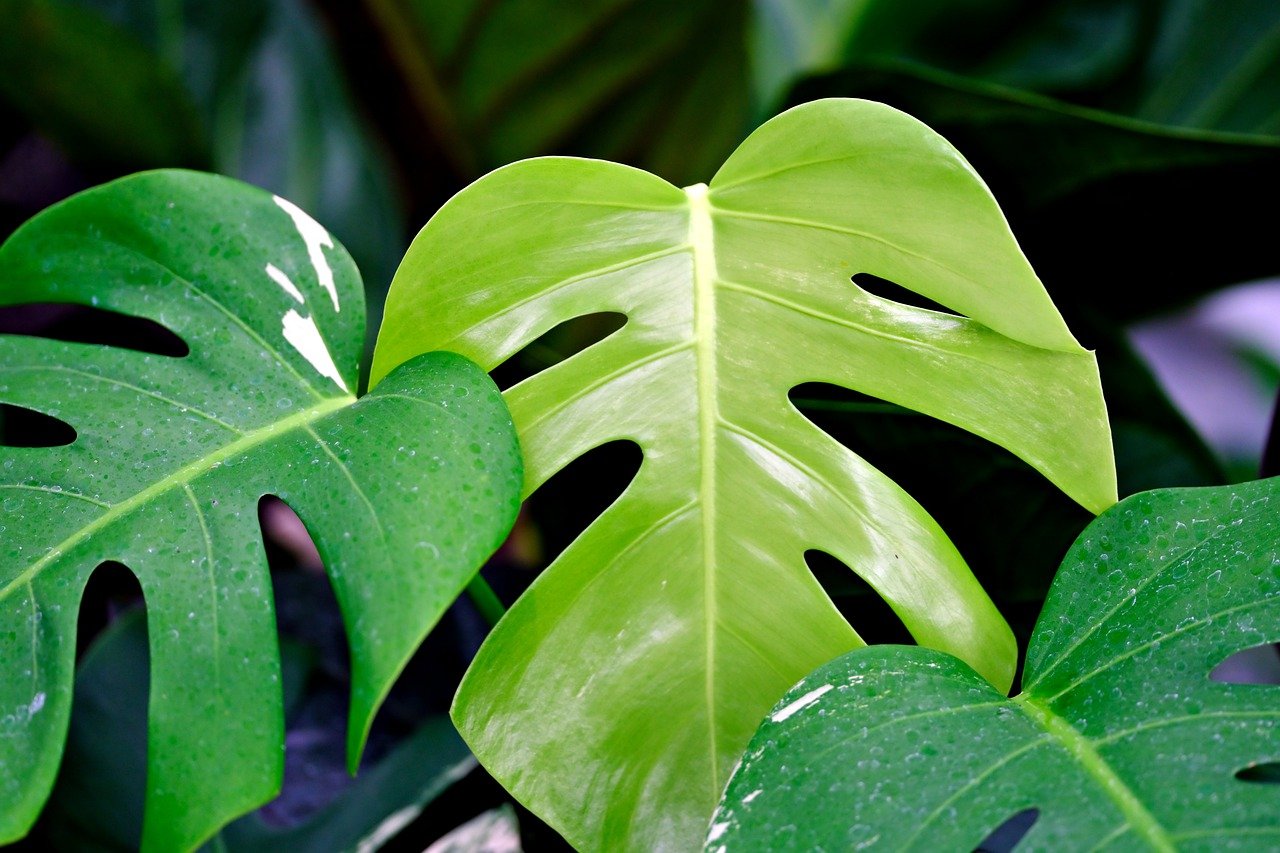Monstera plants, with their large, striking leaves and unique, fenestrated patterns, are incredibly popular for bringing a bit of nature into your home. However, they do need special care to keep them growing beautifully and healthily. Whether you’re a new plant parent or an experienced gardener, taking care of your Monstera is both an art and a rewarding process. Here’s everything you need to know to ensure your Monstera thrives.
1. Light Requirements
Your Monstera loves bright, indirect light. While it can tolerate lower light levels, placing it in a spot where it can receive filtered sunlight throughout the day will help it grow those stunning, split leaves. Direct sunlight can scorch the delicate leaves, causing them to brown and curl. So, you’ll want to position your plant near a window but ensure it’s shielded from harsh rays. If you notice your Monstera reaching or leaning towards the light, it’s a sign that it’s craving a bit more!
2. Watering Schedule
Watering your Monstera can be tricky but incredibly important. You should water it thoroughly when the top two inches of the soil feel dry. Overwatering can lead to root rot, so allowing the soil to dry out slightly between waterings is essential. However, under-watering can cause those lovely leaves to droop, which can be heartbreaking! Invest in a moisture meter to help you stay on top of the perfect watering schedule.
Buy a moisture meter on Amazon, no more guessing!
3. Humidity Needs
Monstera plants are native to tropical rainforests, so they absolutely adore high humidity. If your home’s air is dry, especially during the colder months, it’s essential to create a more humid environment for your plant. Ideally, humidity levels should be around 60%. You can easily boost the moisture in the air with a humidifier, which will keep your Monstera’s leaves shiny and vibrant. Another quick way to add humidity is by misting the leaves or placing a water tray nearby.
4. Soil Preferences
The soil you choose for your Monstera is critical. A well-draining, nutrient-rich soil mix is ideal. You want the roots to breathe but still retain enough moisture to keep your plant hydrated. A Monstera Potting Mix is specially designed to meet your plant’s needs. It’s typically a combination of peat, perlite, and organic matter, which creates the perfect balance between moisture retention and drainage.
Find the perfect Monstera potting mix on Amazon.
5. Fertilization
Monstera plants are known to grow vigorously, but they need a boost of nutrients to do so. Fertilizing once a month during the growing season (spring and summer) with a balanced, water-soluble fertilizer will keep your plant healthy and lush. Be careful not to over-fertilize, as too many nutrients can cause yellowing leaves and harm the plant’s roots. During the winter months, you can scale back or even pause fertilization as the plant’s growth naturally slows down.
6. Pruning and Maintenance
Pruning is an essential part of Monstera care if you want to maintain a well-shaped, healthy plant. Occasionally trim off any yellow or damaged leaves, which not only keeps your plant looking beautiful but also redirects its energy towards new growth. If your Monstera starts to get too big, you can cut back some of the larger stems. Don’t worry—it won’t harm your plant! Pruning also helps encourage more bushy growth.
7. Propagation
One of the most exciting aspects of Monstera care is propagation. If you want to share your beloved plant with friends or simply grow your collection, propagation is quite easy. By cutting a stem with at least one node and placing it in water or directly into soil, you’ll have a brand-new plant in no time! Watching new roots develop can be incredibly satisfying. Once the roots are a few inches long, you can transfer the cutting into a pot with soil, and voilà, you have a baby Monstera!
8. Pest Management
Unfortunately, like many houseplants, Monsteras can sometimes fall victim to pests such as spider mites, mealybugs, or aphids. Regularly inspecting your plant for any signs of pests is crucial in keeping it healthy. If you do spot unwanted visitors, a gentle soap and water mixture or neem oil spray can help clear them up without harming your plant. Staying proactive and treating issues early will keep your Monstera free from damage and thriving.
9. Support and Training
Monstera plants are natural climbers in the wild, using aerial roots to support their growth. To mimic this in your home, providing a sturdy stake or moss pole can encourage your Monstera to grow upright and more robust. As your plant matures, it will develop more fenestrations (splits and holes) in its leaves, creating that iconic Monstera look. Training your plant to climb will also help prevent it from becoming too leggy or sprawling out too far.
10. Seasonal Adjustments
As the seasons change, so should your Monstera care routine. During the warmer months, your Monstera will be in its active growth phase, meaning you’ll need to water it more often and fertilize regularly. But when the colder months roll in, the plant’s growth slows down. This is the time to reduce both watering and fertilizing, as the plant isn’t taking in as many nutrients. Keep an eye on the humidity levels, as indoor heating can dry out the air, and your Monstera may need extra misting or the help of a humidifier.
Taking care of a Monstera can be a deeply fulfilling experience, especially as you watch those gorgeous, glossy leaves grow and thrive under your care. By understanding its needs—like the perfect amount of light, humidity, and water—you can create the ideal environment for your Monstera to flourish.

